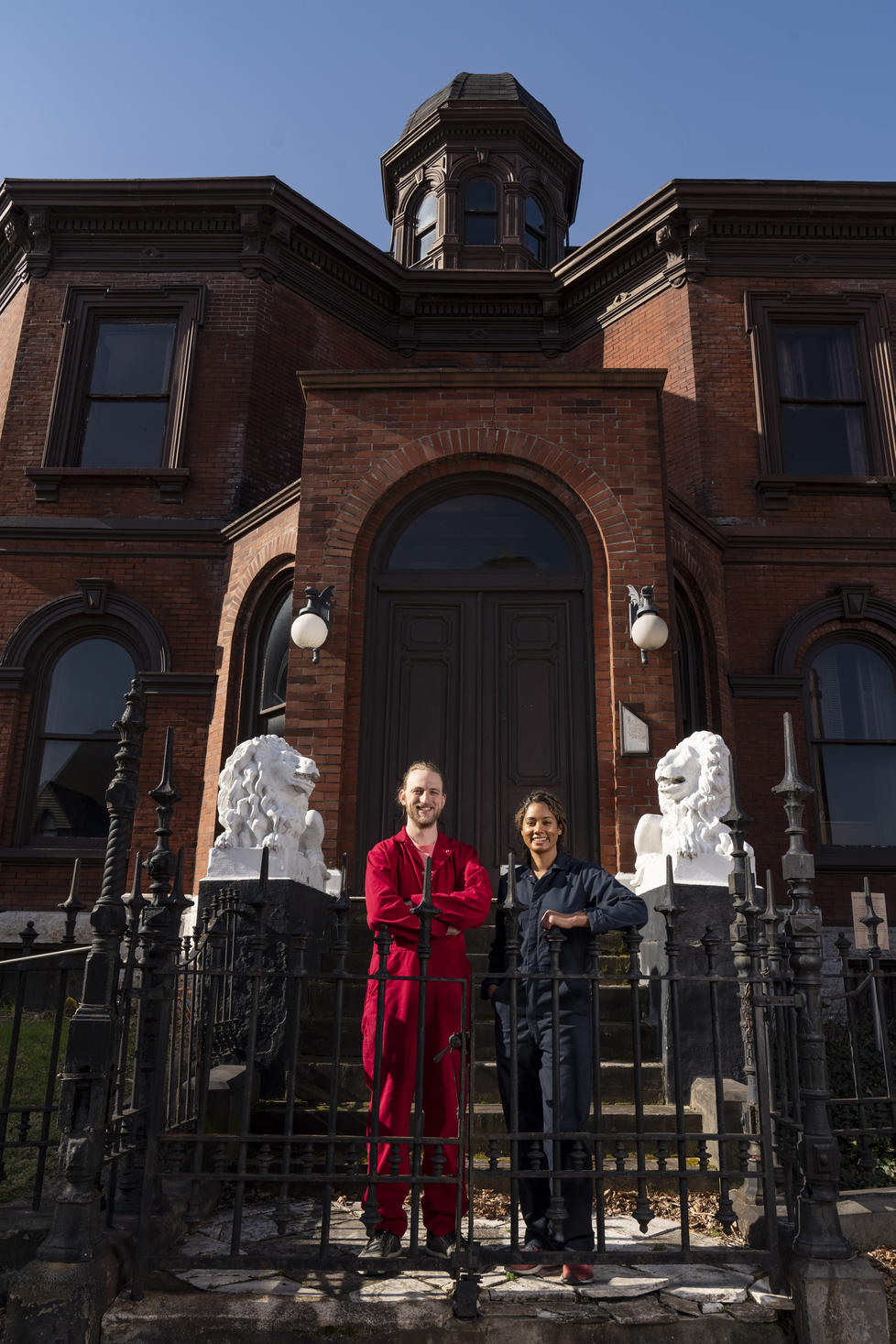Amanda Ramcharan ’11 Helps Develop Technology to Improve Farming
In her spare time, Ramcharan is restoring an 1870 Victorian mansion in St. Louis
“Farms bring together all these complex optimization problems that technology can address,” she says.
During a postdoctoral fellowship at Penn State University, she helped develop a smartphone app for farmers that identifies several types of diseases that afflict cassava, a root vegetable that is one of the developing world’s most important crops. “Diseases really hurt yield,” Ramcharan says. “Farmers need to first diagnose disease so they can treat it or get new plantings.” She traveled to Tanzania in 2017 and 2018 to test and introduce farmers to a beta version of the app, which works without an Internet connection. Using image recognition software and a smartphone camera, the app enables a farmer to hold the phone up to a cassava plant and learn if it has the disease or is healthy. The app continues to be used in Africa.
Ramcharan earned a remote pilot license — the first woman to do so in Pennsylvania — to fly drones equipped with cameras over farms, gathering detailed images and other information about crops. For the last two years, she has worked at Bayer Crop Science, which is based in St. Louis, where she leads the plant health risk assessment team, using models, data, and lab experiments to predict the risk of disease outbreak.
Her interest in sustainability recently prompted Ramcharan to embark on an ambitious project: restoring an 1870 Victorian mansion in St. Louis, where she moved a few years ago (she grew up in Trinidad). Ramcharan and her husband, Mitchell Goist, purchased the 7,000-square-foot Feuerbacher Mansion in December.
Located in the historic Soulard neighborhood, it was built by one of St. Louis’ early beer barons, who took advantage of the Mississippi River’s fresh water and the nearby natural cave system to brew German-style lager (caves were needed before the invention of refrigeration). The house, which took five years to build, has 14-foot ceilings and its original central heating system, with ducts made from slate. Caves below the house may be connected to the cave network used to brew beer.
“We are doing a lot of research on the history of the house and hoping to find original interior photos,” Ramcharan says. Lauren Ivey ’11, a landscape architect in California, is helping with the architectural plans.
In recent years, the mansion served as a boarding house and a four-unit apartment building. The couple plans to do much of the restoration work themselves, using YouTube videos as their guide. Ramcharan is learning how to restore the original windows, which are constructed of wood and can last hundreds of years. As they clean out decades of junk, they are discovering many treasures, such as the original pipe organ and the octagonal shape of most of the rooms. They hope to move in and occupy the third floor next year.
“Historic houses were built to be handed down to generations of stewards,” Ramcharan says. “We’re not only preserving the historical beauty of a community, we’re reducing the environmental impact of construction, creating employment in our local community, and conserving landfill space. What better gift to the planet and future generations?”












No responses yet